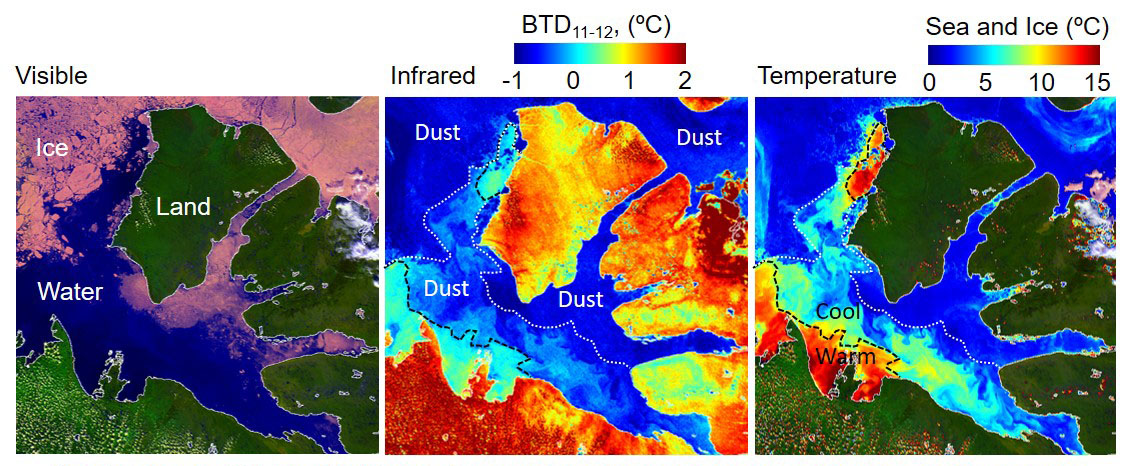Large quantities of dust are transported annually to the Arctic, primarily from Asian deserts. The influx of dust into the polar environment changes the radiative properties of clouds while the deposition of dust onto ice and snow decreases the surface albedo. Atmospheric and surface dust may be identified with space borne radiometers by comparing infrared energy in the 11 μm and 12 μm regime (BTD11-12). Between 2007 and 2017 satellite infrared data revealed persistent low-level dust clouds in the vicinity of Amundsen Gulf in the Western Canadian Arctic during the melting season. Evidence suggests that the subsequent deposition of atmospheric dust in the region affected the surface emissivity in the thermal infrared regime. As a result, satellite derived sea and ice surface temperature algorithms were rendered inaccurate in these areas. Moreover, the ubiquitous nature of dust in the region may play a role in the rapidly vanishing cryosphere. Further details can be found at: The Effect of Arctic Dust on the Retrieval of Satellite Derived Sea and Ice Surface Temperatures

Satellite images in visible and infrared (19 July 2016) showing dust deposition in Amundsen Sound and effect on surface temperature of land and water.